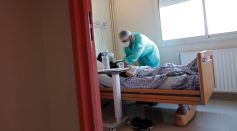MEDICINE & HEALTH
Everything You Need To Know About Gene Editing
Covid-19 and Thousands of Other Virus Mimic Host Protein Stuctures and Functions

Anxiety 101: Five Highly Effective Strategies You Can Try to Ease Symptoms
Dr. Fauci Says to Focus on Hand Hygiene Instead on Wiping Grocery Bags
Antibody Research Gives Insight on Immunity to Coronavirus
Merck Is Using Drones to Deliver Medicines
Heart Health: Couples Share Risk Factors and Healthy Habits
Scientists 3D Printed a Soft, Tongue-Like Surface

Asymptomatic COVID-19 Patients May Lose Antibodies Sooner Than Those With Symptoms
Improving Healthcare in Rural Areas Significantly Improve Climate Change Problems
You Might Be Ignoring the Easiest Way To Catch COVID-19, Fauci Says
How to Reduce and Lighten Acne Scars
Study Reveals Bioplastics Are as Harmful as Traditional Plastic

How to Boost Energy? Here Are Science-Approved Tips to Up Your Zing
Most Popular

Texas Official Shot Down Siren Flood Alert, Complaining That It Might Go Off 'In the Middle of the Night': Report

Nvidia's Jetson Thor Could Make Humanoids Smarter Than Ever

Trump's Trillion Dollar Spending Boost For Pentagon to Create Disastrous Amount of Carbon Emissions, Study Shows

How Gene Editing Could Save Endangered Species from Extinction




